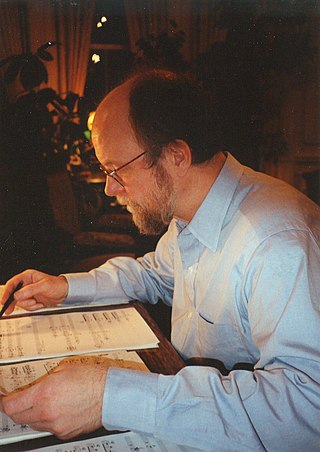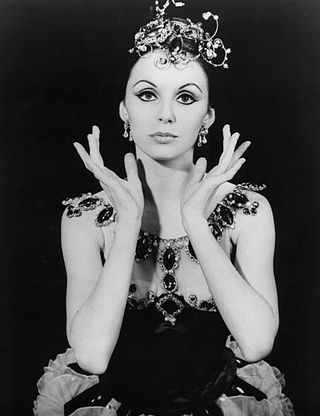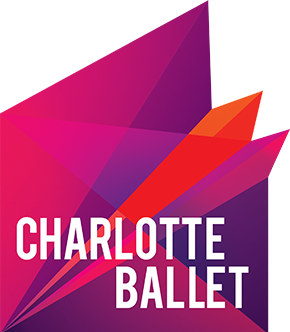Five is a ballet made by Jean-Pierre Bonnefoux for New York City Ballet's American Music Festival to eponymous music by Charles Wuorinen commissioned for the occasion. The premiere took place on 28 April 1988 at the New York State Theater, Lincoln Center.

Charles Peter Wuorinen was an American composer of contemporary classical music based in New York City. He also performed as a pianist and conductor. Wuorinen composed more than 270 works: orchestral music, chamber music, solo instrumental and vocal works, and operas, such as Brokeback Mountain. His work was termed serialist but he came to disparage that idea as meaningless. Time's Encomium, his only purely electronic piece, received the Pulitzer Prize. Wuorinen taught at several institutions, including Columbia University, Rutgers University and the Manhattan School of Music.

Violette Verdy was a French ballerina, choreographer, teacher, and writer who worked as a dance company director with the Paris Opera Ballet in France and the Boston Ballet in the United States. From 1958 to 1977 she was a principal dancer with the New York City Ballet where she performed in the world premieres of several works created specifically for her by choreographers George Balanchine and Jerome Robbins. She was Distinguished Professor of Music (Ballet) at the Jacobs School of Music, Indiana University, in Bloomington, and the recipient of two medals from the French government.

Stars and Stripes is a neoclassical ballet choreographed by George Balanchine to music by John Philip Sousa, orchestrated by Hershy Kay. The ballet was made as a tribute to the United States, Balanchine's adopted country. It premiered on January 17, 1958, at the City Center of Music and Drama, danced by the New York City Ballet. It is dedicated to Fiorello La Guardia, former mayor of New York City. The ballet had been revived by multiple ballet companies, and at different special occasions.
Le Bourgeois Gentilhomme refers to two different ballets by George Balanchine set to Richard Strauss's Concert Suite (1917), with a libretto after Molière's 17th-century comédie-ballet of the same name.
Tricolore is a ballet made by New York City Ballet balletmaster Jerome Robbins, Peter Martins and Jean-Pierre Bonnefoux, conceived and supervised by City Ballet co-founder and balletmaster George Balanchine, to music by Georges Auric, commissioned by the company in 1978. The premiere took place May 18 that year at the New York State Theater, Lincoln Center.

Patricia McBride is a ballerina who spent nearly 30 years dancing with the New York City Ballet. McBride joined the New York City Ballet in 1959. She became a principal in 1961, becoming the company's youngest principal. She danced with the company for 30 years, including roles created for her by choreographers George Balanchine and Jerome Robbins.
Rebecca Krohn is an American retired ballet dancer. She danced with the New York City Ballet as a principal dancer until her retirement in 2017, then became a ballet master and served as one of the interim leaders between late 2017 and early 2019.

Karin Anny Hannelore Reinbold von Aroldingen was a German ballet dancer. She danced as a soloist at the Frankfurt Opera Ballet before joining the New York City Ballet in 1962 after receiving a personal invitation from George Balanchine. She was named as one of Balanchine's main beneficiaries in his will. Von Aroldingen retired from New York City Ballet in 1984, having reached the rank of principal dancer in 1972. In her later life, she worked as a répétiteur for the Balanchine Trust, for which she was also a founder, staging his ballets for various companies.
Union Jack is a ballet made by New York City Ballet co-founder and founding choreographer George Balanchine to traditional British tunes, hornpipe melodies and music-hall songs, ca. 1890–1914, adapted by Hershy Kay. The premiere took place on 13 May 1976, at the New York State Theater, Lincoln Center, to honor British heritage in the United States its bicentennial with costumes by Rouben Ter-Arutunian, original lighting by Ronald Bates and current lighting by Mark Stanley. At the finale the ensemble spells out "God Save the Queen" in semaphore code and the Union Jack unfurls. Principal dancer Jock Soto included an excerpt from Union Jack in his farewell performance in June 2005.
River of Light is a ballet made by New York City Ballet balletmaster in chief Peter Martins to eponymous music by Charles Wuorinen commissioned in honor of his sixtieth birthday. The premiere took place June 11, 1998, at the New York State Theater, Lincoln Center, with costumes by Holly Hynes and lighting by Mark Stanley; the 2008 revival was conducted by the composer and held in honor of his seventieth birthday. The River of Light was the third work in a trio of scores the New York City Ballet commissioned from Wuorinen in the early 1990s, the others being The Mission of Virgil and The Great Procession. All three works refer to scenes in Dante's Divine Comedy.
Delight of the Muses is a ballet made by New York City Ballet's ballet master in chief Peter Martins to eponymous music by Charles Wuorinen, commissioned by City Ballet as part of its commemoration of the bicentennial of the death of Wolfgang Amadeus Mozart. The composer has taken fragments of Mozart piano sonatas K.231 and K. 283 and music from Don Giovanni for this tribute to Mozart. The premiere took place on 29 January 1992 at the New York State Theater, Lincoln Center.
Jean-Pierre Bonnefoux is a French ballet dancer and instructor. He is the former artistic director of the Charlotte Ballet and the Chautauqua Institution.
Four Bagatelles is New York City Ballet ballet master Jerome Robbins' only ballet made to the music of Beethoven: Bagatelles, Op. 33, Nos. 4, 5, and 2 and Bagatelles, Op. 126, No. 4. The premiere took place on Thursday, 10 January 1974 at the New York State Theater, Lincoln Center. The ballet was revived for the 2008 Spring Jerome Robbins celebration.
Peter Jarvis is an American percussionist, director, drummer, conductor, composer, music copyist, print music editor and college professor.
Sonatine is a ballet choreographed by George Balanchine to Ravel's eponymous music. The ballet was made for the New York City Ballet's Ravel Festival, which celebrated the centenary of Ravel, and premiered on May 15, 1975, at the New York State Theater, following a preview performance the previous day. The ballet was originated by Violette Verdy and Jean-Pierre Bonnefoux.
Steven Caras: See Them Dance is a public television documentary directed by Deborah Novak. It concerns the life and work of former New York City Ballet dancer, Steven Caras, who drew upon his practical experience as a dancer to become a perceptive dance photographer. Focusing on Caras' difficulties in becoming a professional dancer, the film explores the complexities of ballet and profiles the father of ballet in America, George Balanchine.

Charlotte Ballet is the oldest professional ballet company in North Carolina. It was founded as North Carolina Dance Theatre in Winston-Salem by Robert Lindgren, who was then Dean of Dance at the University of North Carolina School of the Arts, in 1970. It moved to Charlotte in 1990 and rebranded as Charlotte Ballet in 2014. It currently has 26 dancers and is the parent company of the Charlotte Ballet Academy.

Variations for Orchestra, Op. 31 (1926–28) is an orchestral set of variations on a theme, composed by Arnold Schoenberg and is his first twelve-tone composition for a large ensemble. Premiered in December 1928 by the Berlin Philharmonic conducted by Wilhelm Furtwängler, it was greeted by a tumultuous scandal.
Stravinsky Violin Concerto, originally titled Violin Concerto, is a neoclassical ballet choreographed by George Balanchine to Stravinsky's Violin Concerto. Balanchine had previously choreographed another ballet to the concerto in 1941 for the Original Ballet Russe, titled Balustrade, though it was not revived following a few performances. He then reused the concerto for New York City Ballet's Stravinsky Festival in 1972, a tribute to the composer following his death. The ballet premiered on June 18, 1972, at the New York State Theater.